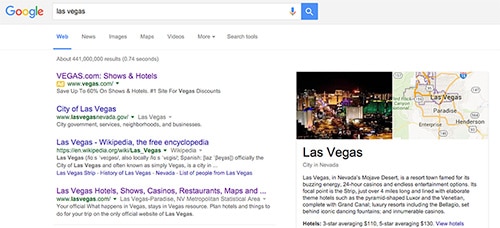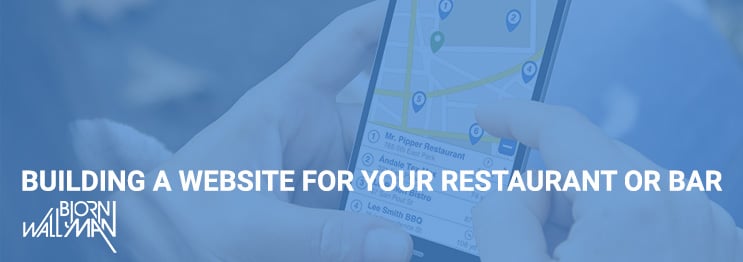5 Steps to Take To Your Site from The SEO Plateau to High Growth SEO
Virtually every consultant and in-house SEO expert knows that the first 3-6 months of any SEO venture is usually dedicated to some type of maintenance. This includes tuning and tweaking the sub-optimal, fixing mistakes and existing issues, and generally doing everything you can to follow the current best practices.
Although the beginning may start off slowly, taking the proper steps to bolster your SEO efforts will reap benefits for months, maybe even years, to come. Your newly optimized pages will start getting ranked on search engines and, pretty soon, your level of traffic will increase dramatically. This is will give you more links, more sharing, more exposure, and, ultimately, more business.
Once your list of actionable, low-hanging fruit dwindles to the single digits and your SEO setup is running like a well-oiled machine, you’ll hit what is called the SEO plateau. This is a great place to be, not many companies will ever reach this point, but what happens next?
If this is the place where you are in your SEO journey, consider the following 5 strategies to help you launch off of your plateau and reach the level of high-growth SEO.
1. New Content and Keywords
If your rankings are still high but your search traffic growth has stalled, consider this option used by many growth-focused organizations. These types of companies are not satisfied by ranking high for the keywords that are already in their arsenals, they are always on the lookout for new keywords and phrases that could bring more traffic to their sites.
Here are three steps that you can use to expand both your content creation targets and your keywords list:
• Understand your audience and learn which keywords actually have value: In the rush to increase rankings and traffic, we forget that these elements are no good on their own. If your SEO efforts brings in lots of new traffic but doesn’t translate into short or long-term conversions, you may have to rethink your strategy.
• Know the ranking ability of your domain: Most sites rank for a handful of keywords or so, but there are a few that have risen above the rest to earn high rankings consistently on a large number of commercially-valuable SERPs. If you would like to be one of the chosen few, you must aim for a balance of easy hits, comfortable targets, and seemingly impossible goals. One metric that can help is Domain Authority, but it is important to note that the sixth sense many professional SEOs seem to have applies here as well.
• Find (and hit) your link and amplification sweet spot: If you didn’t know before, social media should never be your only source of links that help you gain rankings. But, on the other hand, we’ve also been told that our content won’t rank if it doesn’t have links. The solution to this problem lies in compromise, your content must reach the levels of amplification that will boost both direct traffic and the kind that will help your earn rank and links. Finding this sweet spot is a challenge for almost all content creators, but this doesn’t mean that it’s impossible to master. The content that will have the best chance of success must be something that the content creator is passionate about, adds unique value, and resonates with the audience so that they are more than willing to share and amplify its reach.
2. New SERP Features and Verticals

It’s quite simple – if a feature or vertical appears in large numbers on global search results and/or in valuable-to-you SERPs, then it’s worth the effort to do your research. If you are able to get your hands on that valuable SERP real estate before, or in addition to, your competitor, your traffic growth opportunities will expand considerably.
Before we continue, did you know that YouTube (by itself) is the planet’s second-biggest search engine? So, if you don’t think that video holds great opportunities for SEO, you may want to re-evaluate your perspective. Regardless of the niche that you occupy, there’s a decent possibility that video can help you attract the members of your target demographic and build brand value. While it’s true that Video SEO has seen its share of changes (especially after Google moved away from rich-snippets for content that’s not on YouTube), it doesn’t change that YouTube is a huge search channel.
3. More SERP Domination

Having a website that ranks on the first page of search results is a great accomplishment, but being content with this ranking may cost you several opportunities for growth and expansion. For instance, consider placing your focus on getting multiple listings in the same set of search results. Surprisingly, this goal isn’t about getting more real estate on a search page but about increasing the click-through rate (CTR) and traffic for both. In fact, it has been proven that having more than one listing in search results can increase your CTR. Similarly, if you think that ranking on a search engine’s first page is good enough, you may lose opportunities to increase your search traffic. Instead, double-down on the SERPs and keep plugging away until you’ve reached the number one spot.
4. Changing Your Perspective of the Buyer Funnel
Keywords that lead directly to conversions are valuable, but it’s important to remember that SEO and PPC are not the same thing. In other words, SEO doesn’t require you to limit your keyword targets to a chosen few with a per-determined conversion rate. If you get and maintain high rankings, organic search will send traffic to you site for years. This also means that your content and keyword pairs shouldn’t be limited to only those that produce conversions.
Consider this, most consumers will visit a site several times before they make a buying decision, even if it’s for a free trial of software. But, that’s not all, those who visited the site more times before converting tend to be better customers, use more features, are less likely to cancel, and are more likely to interact on forums and message boards. The goal here is to create fans out of the people who interact with your product, not to turn them into buyers as quickly as possible.

• Exposure: Through ads, social media, organic search, content, forums, etc.
• Discovery: These first couple of visits are used to read content and learn more about the company and the services/products that it offers.
• Consideration: The point where the potential customer begins contemplating whether the product offered is a good match for their specific needs
• Conversion: The purchase of an item from the business turns potential customers into conversions.
• Customer Relationships: Excellent customer service and other aspects that create a positive post-conversion experiences
• Retention: When customers have great experiences with a company, they develop loyalty for the brand.
There are two main benefits of moving your content creation and keyword research up the funnel:
• This area is typically less competitive and its easier to target keywords and phrases that have lower direct-conversion-intent.
• The higher you are on the funnel, the more room that is available for your keyword research and content creation opportunities to expand, and on an exponential level. This expansion will dramatically enhance your search traffic growth.
Most companies use keyword options that are very competitive and limited. Imagine that you are helping a local painter in Alexandria, Virginia with their SEO. Most likely, their keyword options are, or are similar to, “alexandria painting” and painting contractor alexandira.” But, just one step up the funnel and suddenly a plethora of possibilities are placed before you e.g. “the difference between paint, primers, and stains,” “how to pick the right color paint for your bedroom,” etc.
Many local businesses have built their conversion funnel on videos on YouTube and educational photo tutorials on their sites. These videos have helped them build a loyal audience base that shares their work with others and, the amazing thing is, many times these audience members have never bought so much as a thumbtack.
5. Multinational/International Targeting
There are considerable opportunities available for larger companies who desire to expand their company’s reach beyond the boundaries of the local language and/or the country. But, this step isn’t easy and, dependent on how your company decides to purse international expansion, may require you to start almost from scratch. No matter how you decide to proceed, it’s important that you do your market and keyword research before you jump in head first. Just because a product or service does well in one country doesn’t mean that it will succeed in another. Good luck!



